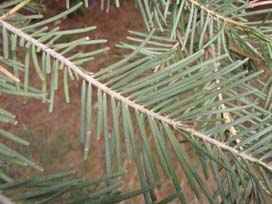
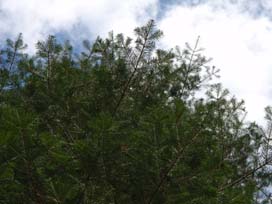
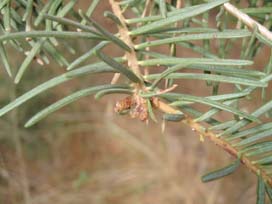
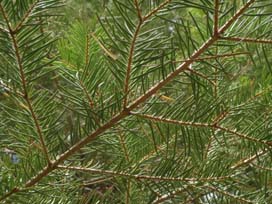
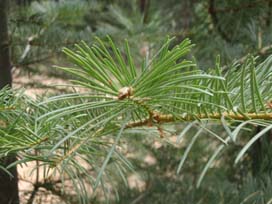
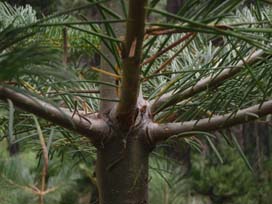
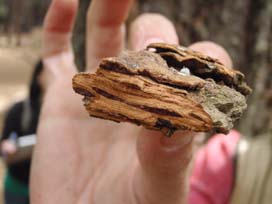
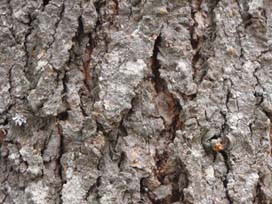
white fir
Abies concolor
Family: Pinaceae.
Type: Large evergreen conifer.
Leaves: Short needles with rounded tips. The needles generally attach only along the sides of the stem, with a part along the top and bottom, giving flat sprays (although there is some variation in this trait, and it is more visible on older stems that have expanded in diameter). The sprays may curve upwards somewhat, especially in sunlight, but will never form a bottle-brush shape like the Douglas-fir. Needles smell like tangerine when crushed, which is very characteristic. When a needle is plucked, the petiole scar is round (contrast to Douglas-fir, for example). The needles make a quarter-turn twist as they come out from the stem.
Twig: Bark of younger trees is smooth and gray, with blisters filled with tangerine-scented sap. Mature trees have outer bark that is gray (lighter than that of the Douglas-fir), with inner bark with a "roast beef and cheese" appearance like that of the Douglas-fir. The "cheese" in the white fir's bark has a pinkish hue, compared to the white cheese of the Douglas-fir.
Cone: Usually seen only in the canopy, upright; the cones shatter and fall as individual scales.
Miscellaneous: As a true fir, the white fir has needles with rounded tips, its buds are rounded (unlike those of the Douglas-fir), and cones are maintained upright in the canopy (unlike in the Douglas-fir, where they hang pendant). The white fir is very shade-tolerant, and is not fire-resistant, so it is becoming more common as fire is excluded in lower montane forests. They can grow very thickly together, and so as it becomes more prevalent, it shades out the ground and makes it different for species such as ponderosa pine, sugar pine, and giant sequoia to become established.
 |
 |
 |
 |
 |
 |
 |
 |